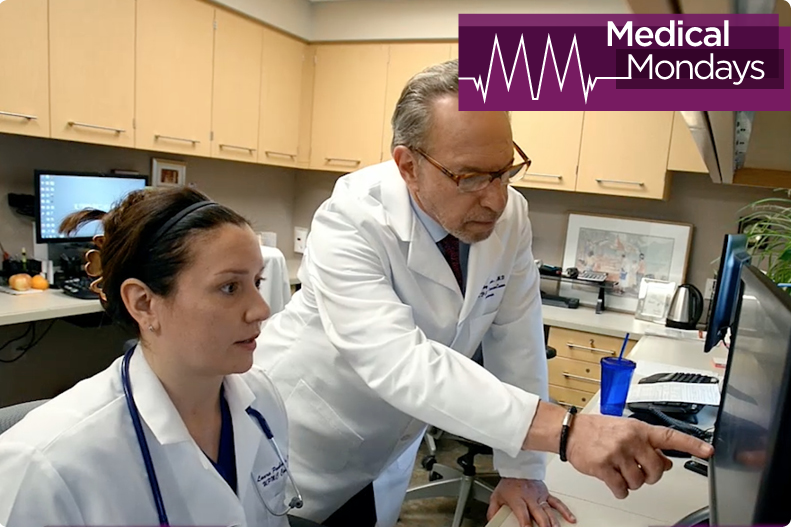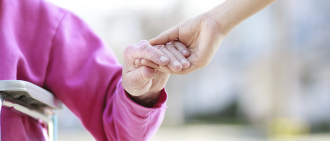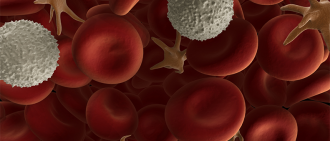It’s estimated that more than 232,000 women and 2,300 men are diagnosed with breast cancer each year. But improved research, prevention, screening, and treatment options are making a difference in the lives of those touched by the disease. Use this resource guide to learn more about breast cancer, and then share the posts with those you love.
Here you’ll learn about:
- Breast cancer stats and facts (infographic)
- Treatment options for breast cancer
- How to cope with chemotherapy
- Lymphedema
- Bone marrow suppression
- Recovering from breast cancer
-
Infographic: Breast Cancer by the Numbers
1 in 8 women will be diagnosed with breast cancer in her lifetime. When diagnosed late (distant stage) instead of early (local stage), 5-year survival rate decreases by 75 percent, so it is essential to know the signs and be aware of your risk factors. Check out our infographic to discover the facts, risk factors, and symptoms of breast cancer so you can join the fight against the disease.Learn More
-
Understand Your Breast Cancer Treatment Options
Depending on the individual patient, breast cancer treatment can vary widely. The stage of cancer, tumor size, and type of cancer will determine the treatment plan your doctor will develop. Chemotherapy, hormone therapy, surgery, radiation and targeted therapy are common treatment options. Read more to discover your treatment options for breast cancer.Learn More
-
How to Cope with Chemo Side Effects
Although chemotherapy is a successful treatment option for many, it can have side effects that affect your quality of life during and after treatment. From nausea to hair loss and feeling tired and drained, chemotherapy can bring about dramatic physical and emotional changes that can be just as challenging as a cancer diagnosis itself. Read more to discover the common side effects of chemotherapy and various ways to cope.Learn More
-
Managing Lymphedema During and After Breast Cancer Treatment
Lymphedema is one of the most common complications of breast cancer treatment. It is the fluid buildup in soft tissue, causing swelling in the limbs, usually in the arms/legs or breast, which can impact everyday activities, cause infection, and make it difficult to wear sleeved shirts. Learn more about the complication and what you can do to manage it.Learn More
-
Understanding Bone Marrow Suppression During Cancer Treatment
Chemotherapy, radiation, and major surgery can damage tissues in bone marrow so that it doesn’t work properly. While it’s a side-effect of treatment itself, suppression of bone marrow can lead to a new set of side effects that may need to be monitored by your doctor. Read more to learn about types of bone marrow suppression that are common after breast cancer treatment.Learn More
-
What to Expect During Recovery from Breast Cancer Treatment
Managing multiple treatments, follow-up care, and the physical and emotional aspects of recovery can leave you feeling exhausted and overwhelmed. Although your treatment will be unique, knowing what to expect can help you take the steps to cope and fight harder against the disease. Read more to learn exactly what you can expect during recovery from breast cancer treatment.Learn More
-
Breast Cancer: Am I At Risk?
Knowing your risk is an essential first step in combating any medical condition. For breast cancer, factors like age, family history, and obesity play a role in risk evaluation. The best approach to monitoring your risk is by following recommended screening guidelines and undergoing genetic testing if necessary. Learn more of the risk factors for breast cancer and what you can do to better understand your risk.Learn More
-
Breast Cancer Symptoms You Can’t Feel
Because late diagnosis can decrease the 5-year survival rate by 75 percent, it is essential to be aware of the signs of breast cancer. Particularly in the early stages of breast cancer, symptoms of the disease are not intense. However, the breast may look and feel differently as the tumor grows. Read more to discover the symptoms of breast cancer and the steps you can take to proactively fight against the disease.Learn More
-
Breast Self-Awareness: What Women Should Know
We all know someone who has been affected by breast cancer. While there isn’t a sure way to prevent it, there are things women can do to help reduce their risk and increase the odds of it being detected at an early, more treatable stage. Read more to discover what women should know about their bodies and what signs to notice during a self-exam.Learn More
-
Cancer Talks: Listen to Your Body
There are numerous warning symptoms for cancer, many of which also can point to other serious medical conditions. According to Edward Chu, MD, chief of the Division of Hematology/Oncology at UPMC and deputy director of the University of Pittsburgh Cancer Institute, you should call your primary care physician (PCP) if you have any unusual or persistent symptoms that last longer than two to three weeks. Read more to discover the common warnings signs of cancer.Learn More










